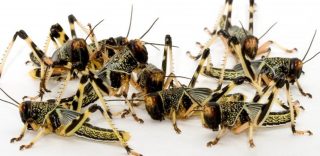A recent announcement, by Kenyan authorities, reveals that 15 counties in the country have been badly affected by a new swarm of a locust invasion. According to Peter Munya, Agriculture Cabinet Secretary, the situation could escalate with huge swarms along its Ethiopian border.
At a press conference on Thursday, 21 January 2021, Munya assures Kenyans of readiness to combat the locust with adequate resources for the next two months.
The Cabinet Secretary also mentioned that the Agric ministry deployed nine aircraft for aerial spraying with three on standby since the second wave of invasion began. He further noted a series of effort by the states including the release of 21 vehicles fitted with sprayers for ground control and training of 5000 personnel from the National Youth Service to combat the invasion.
Earlier, on Monday, 18 January 2021, the Food and Agric Organisation of the United Nations (FAO) released a report that indicated the daily arrival of several immature swarms of locust in Kenya, which seemed to spread across its northern and central regions. It further projected that any rainfall that may occur in the coming weeks could cause swarms to mature and lay eggs that will hatch and give rise to hopper bands in the coming months.
In October 2020, a report revealed that COVID-19 restrictions and a forecast below-average October-December rains threatened the country with acute food insecurity. The forecast below-average 2020 short-rains and 2021 long-rains projected a short-lived pasture and water regeneration. The report also projected a gradual decline in the body conditions of livestock and their produce. It said this would contribute to limiting household access to food and income.
Kenya’s Agriculture sector is one of its key economic booster and revenue generator. It directly contributes 26 percent to its the Gross Domestic Product (GDP) and makes a 27 percent indirect contribution through linkages with other sectors. The sector employs over 40 percent of the total population and well over 70 percent of Kenya’s rural people.








